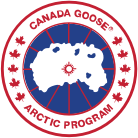Your shopping bag is empty.
- Austria (€EUR)
- Belgium (€EUR)
- Bulgaria (€EUR)
- Croatia (€EUR)
- Cyprus (€EUR)
- Czech Republic (€EUR)
- Denmark (€EUR)
- Estonia (€EUR)
- Finland (€EUR)
- France (€EUR)
- Germany (€EUR)
- Greece (€EUR)
- Greenland (€EUR)
- Hungary (€EUR)
- Iceland (€EUR)
- Ireland (€EUR)
- Italy (€EUR)
- Latvia (€EUR)
- Lithuania (€EUR)
- Luxembourg (€EUR)
- Malta (€EUR)
- Monaco (€EUR)
- Netherlands (€EUR)
- Norway (€EUR)
- Poland (€EUR)
- Portugal (€EUR)
- Romania (€EUR)
- Russia (€EUR)
- Serbia (€EUR)
- Slovakia (€EUR)
- Slovenia (€EUR)
- Spain (€EUR)
- Sweden (SEK)
- Switzerland (CHF)
- Turkey (€EUR)
- Ukraine (€EUR)
- United Kingdom (£GBP)
Innovation comes naturally to our Goose Crew members. Even in a year like 2020 – or perhaps especially in a year like 2020 – our people pursued new ideas and turned new processes into long-term strategies for efficiency. Here are two examples our people upped efficiency and reduced waste in 2020.
Here are two examples our people upped efficiency and reduced waste in 2020.
3D prototyping
When they design a new product, the Product Development and Engineering team typically creates three prototypes – the equivalent of three drafts of a document – before the product actually goes into production. Creating prototypes takes time and material.
In 2020, our team launched a new process. They had already been learning a new software for creating digital 3D models so that all three iterations of the prototype wouldn’t have to be made by hand. They accelerated their progress and fully integrated this software into our manufacturing processes during the pandemic. While the Canada Goose facilities were shut down, the software allowed the Product Development team to rapidly create prototypes for the scrubs and gowns, even before sewers were called back.
Over the next few months, while production was devoted to PPE, patternmakers were able to stay on course for other new product designs, using the software to create 3D prototypes. When we resumed manufacturing parkas, the prototypes were ready.
At that time, all three prototypes were made digitally. Going forward, we’re using the 3D software to create the initial new design prototypes and creating all subsequent prototypes by hand. This plan gives our teams the most accurate assessment of how our products will look and feel when worn, while allowing us to save both materials and labor resources. It reduces waste that was previously produced when physically creating the actual prototypes for consideration. With digital modeling, no physical materials are used.
Material scraps turned into masks
No one specifically asked Goose Crew members to think about preventing waste during a pandemic, especially not when they were moving at breakneck speed to figure out how a parka maker could pivot to producing personal protective equipment. But when our patternmakers saw the scrap fabric that resulted from making scrubs and gowns, they saw an opportunity.
They began creating masks from the scrap fabric. Their idea caught on and we assigned more people to make them. We gave thousands of masks to Goose Crew members in our factories, then began sending them to our stores around the world as they began opening back up. We continued to improve the mask to become a real, sellable product for consumers – one that started with Goose Crew members who were on the lookout for ways to prevent waste.




